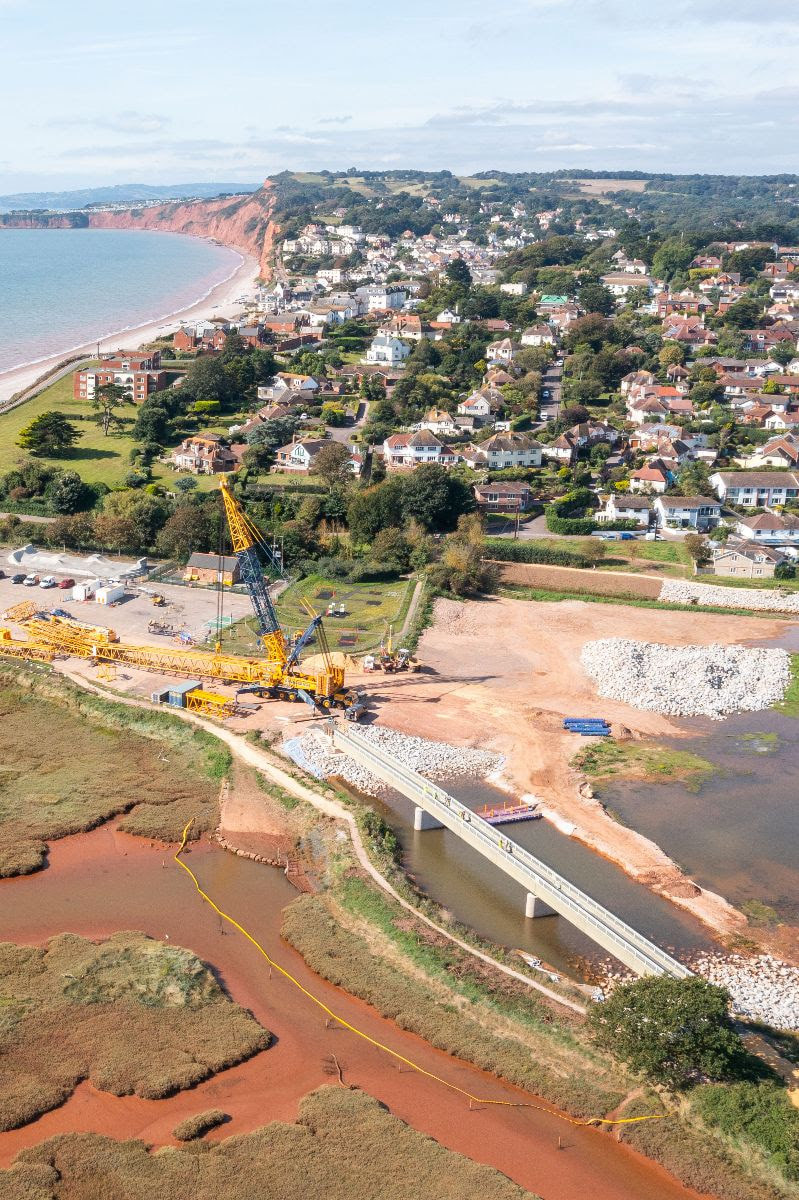Lower Otter Restoration Project
This work will be undertaken in a controlled manner (over a period of weeks) and from this point in time, the tide will enter and drain the floodplain through the gap in the embankment.
The depth of water in the new habitat area will depend on the state of the tide (high or low and whether we are at springs or neaps) and the progress of the embankment removal.
Footpath users please note: as previously notified, from this point onwards some footpaths may be inundated at high tide (though there will be a reduction in the duration for which paths are affected by river flooding). Signage of affected paths are already present around the site. The various footpaths around the site are at different heights relative to sea level and will not all be inundated with the same frequency. Tide timetables are available in the form of QR codes on the signs to enable walkers to plan their routes. The frequency of inundation of both the South West coast path and the riverside path to Otterton will be unchanged. The new footpath on the former tip and the footpath on South Farm Road (which used to flood most years for an extended duration) will now only flood during exceptional flood events, following raising works undertaken by the scheme.
What to expect from the transition to intertidal habitat. As the site is successively inundated by waters from the Otter estuary on each high tide, silts will be deposited, and the site will begin its slow transition from low-grade agricultural land to nationally rare and much-needed intertidal habitats, including salt marsh and mudflats. This, in turn, will attract a diversity of wildlife including wintering and wading birds.
This transition will take time. Initially, low-lying terrestrial grasses and plants will die back due to the increased salinity of the estuarine water entering the site. Bare areas will form providing valuable feeding habitat for wetland birds throughout the year. Over time some areas are likely to be colonised by salt-tolerant species, forming areas of saltmarsh. The new habitat will eventually look similar to those already at the estuary mouth. We are not planting in the intertidal area, as experience has shown that natural colonisation is the best way of getting the right growth in the right place. We expect change to be quite rapid over the first two years, and then more gradual as the site and wildlife become ever more natural.
This is a very exciting milestone and will increasingly benefit people and wildlife in the Lower Otter Valley.
The new Otter Estuary Nature Reserve car park on South Farm is now open.
This is another significant step towards the completion of the Lower Otter Restoration Project. The new parking area has fantastic views over the heart of the reserve and is well connected to the most recently improved footpath network, making it a brilliant place to start your walk. A viewpoint seating area has been carefully placed to make the most of the view from the car park, the seating is still being crafted and is due to be finished soon.
Parking fees apply in this car park. The car park will be managed by the Pebblebed Heaths Conservation Trust, all funds generated will be reinvested back into the management of the nature reserve, upkeep of visitor facilities, and to support our public engagement and educational work. The parking payment machine will accept cash and card or you can use the Ringo parking app. There are three blue badge bays which are free to use for those who are eligible.
Newsletter posted with the permission of Kier, LORP.











9/26/2023
0 Comments